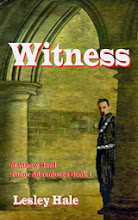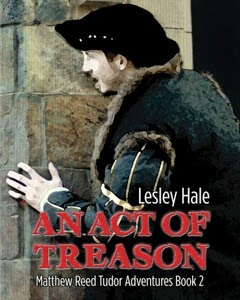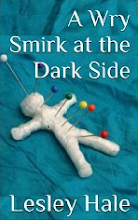Now these are what you call fjords. Forget those ones we saw in Denmark, these ones are the real McCoy, fjords which take your breath away, providing awe and wonder in bag loads. The most dramatic had dark grey sides – craggy slabs of granite which dropped sheer into water of the deepest blue/green. The sort of colour you’d get if you mixed a rich emerald with an intense turquoise. You could almost see Kirk Douglas hopping along the oars of a stripy-sailed Viking longship, and these along the Fosen coast are not even renowned as the very best of Norwegian fjords.
Fjords and Coastline fit for Vikings – Bratjerfjorden and Bessaker
The Fosen peninsula was our next stop after Trondheim. It lies just across the Trondheim Fjord, and we approached it on the small but busy car-ferry from Flakk to Rørvik, joining the Friday (9th July) evening queues heading for a weekend getaway on Fosen’s quiet coasts and lakes. Our first night’s stop was a secluded spot perched above an inlet on an off-cut of redundant road that had been bypassed by a new tunnel. It looked great but abounded in swarms of midges, so that we were soon inside with all windows and doors shut.
Osen Panorama
We then spent three nights at Osen, a village on the north of the peninsula where the coast is cut by deep fjords and lined by an outlying archipelago of scattered, stony islands. It was a striking, impressive landscape, and, we felt, our first real fjords. There was an excellent parking place at Osen where we could have camped for free, but we opted to stay on a campsite (yes, paying) in order to have electricity, and ended up staying an extra day just because it was so, well, nice.
Osen at twilight and dawn
We soon noticed that almost everyone else was fishing. The seas and lakes teemed with fish, but you could not buy it anywhere, and we soon came to feel that we were missing out. Every caravan, tent, motorhome and hut seemed to have at least one angler, and whole groups of German men had taken over little harbours to fish for coley, ling, cod, salmon, you name it. On our campsite people seemed to be popping out on boats or off to the harbour and coming back with fish which they cleaned in the little hut provided specially for the job. Quite frankly we were getting just the teensiest bit jealous. We began to seriously wonder how hard it can be to get started in fishing, but maybe an easier option might be to sit Rob out by the harbour with a plate and a sign reading “gi meg fisk”. He’s a clever chappie and quite able to write a sign begging for fish in several languages!
Fishing at Yttervik
In addition to the fjords and the fish there are the huts. Huts, or hytter, are a staple part of Norwegian outdoor life. Ranging from garden shed size to substantial chalets, these wooden leisure homes crop up wherever the scenery is inviting, from rocky seashores to the depths of forests, where they often sprout like mushrooms in the undergrowth, their existence revealed only by occasional groups of cars parked beside a rural road, or the glimpse of red planking through the pines. They also a feature of almost all campsites – in fact some have little space for any touring vehicles at all.
Åfjord overnighting spot on the Fosen peninsula – with distant huts
One feature of lots of buildings here, old and new, are the grass roofs. They are fascinating and don’t just crop up on the small huts - we’ve seen them on quite substantial houses, on whole farm complexes, on the covers for post boxes, on dog kennels and even over a petrol pump. Sometimes they are just grass, but more often they are coloured with pretty wild flowers, which around here seems to be naturalised violet geraniums, large white daisies, lady’s mantle, deep purple lupins and tall buttercups. If left to go completely wild, the roofs end up with whole trees growing out of them. I (Lesley) now want a log cabin with a grass roof in my garden. Like fishing, how hard can it be to build one?
.jpg)

Grass roofs on various structures
The heatwave that we had enjoyed since Denmark came to an end while we were in Osen, and from Tuesday 13th we pushed on north through heavy, cold rain and mists that obscured the hills. We took the main E6 road north, and despite the appalling weather there was no mistaking the magnificent scenery as we drove through the Namsdalen gorges. A shabby, rain-soaked archway and closed visitor centre indicated that we had reached Northern Norway, but we pressed on, and turned onto one of the few side roads looking for a place to park for the night. We were in luck, for at the end of a long lake, beneath glimpses of the towering hills of the Børgefjell national park, we found a flat spot by a gushing mountain river that claimed to be a campsite, although its facilities consisted of three areas for wood fires, a picnic table and piles of logs for burning, unlimited cold running water and a wonderful location. An honesty box asked for 40 kroner (about £4.20), and we willingly paid. Here, in the rain, we had our first camp fire of the trip.
Camping at its best at Børgefjell
We followed the E6 then for most of the way north to Bodø. It was single carriageway, and for a major national trunk road it was surprisingly pleasant to drive on, and the scenery on these stretches was rarely short of stunning. We paid the extortionate amount of 180 kr to stop on a campsite at Yttervik on Wednesday night. Rob was particularly miffed about this as he feels we are cheating if we don’t do something close to wild camping every night now we are in Norway, but he was mollified to some extent by the fabulous position on the headland from where he could view the ever changing colour of the skies over the snow speckled distant hills. Me, I just kept my eye on the handbrake and tried to put from my mind the visions of going over the edge.
A mystery - this pretty little table and chairs arrangement was set up in a layby near Grong!
We had a two-night interlude in the Svartisen valley just south of the arctic circle, which is the starting point for trips to a branch of the Svartisen glacier. I (Rob) had heard about the colours in glaciers but until I saw it for myself I could not imagine the almost-luminous turquoise that streaks the dirty ice, seeming to shine from its crevices and hollows. Nor did I realise that the edges of a glacier, at least in its lower reaches, do not abut neatly the enclosing rock, but rather shrink away from it, leaving gaps and caverns below the ice, whose ceiling of icicles glows with this same turquoise. The walk that day was full of ‘wow’ moments.
Foot and edges of the Svartisen glacier
Under the glacier - amazing shades of blue
Feeling on top of the world – Rob’s walk back
We reached the Arctic Circle on Saturday 17th July, still on the E6. You cross the Saltfjell mountains on a wide rocky plain, and just before the summit you are greeted by a huge carpark and a sea of motorhomes. Right on the circle itself stands a dome-shaped visitor centre that sells all types of tat but serves no informative purpose. Behind the visitor centre and still on the circle is a little hill covered in small stone piles that people have left, which looks like some amateur Andy Goldsworthy installation. The big, barren landscape is impressive in itself though, and we were in any case in a mood to celebrate, and took our pictures by the Arctic Circle markers in the warm sunshine.
We reach the Arctic Circle
Throughout northern Norway are a series of 33 artworks which make up Artscape Nordland. These are sculptures permanently placed in natural environments. The list of artists reads like a who’s who of modern sculpture spanning the last three decades, so when we are passing these we are going to make an attempt to see them. The one I {Lesley) really wanted to see was by Antony Gormley – he did Angel of the North – so his name should ring a bell. I like his work, which is largely based on human figure, and have given school assemblies and organised art activities based around it, so I wasn’t passing up the chance to see it in the flesh, so to speak, and at Mo i Rana the sculpture is a giant granite man standing in the harbour staring outwards. You make of modern art what you will. I liked the figure. He’s the strong and silent type. Apparently he was meant to be made from metal, as the town’s industry is based around this, but the local ironworks closed down, so he got carved in granite instead. When he was installed some of the locals complained because he didn’t have a penis, but then again he doesn’t have any features, so it would have changed the whole concept to have his tackle in situ!
Mo i Rana – Havmannen (Harbourman) by Antony Gormley
This second leg to the Norway part of our trip has suddenly got us digging deep into our pockets and we are now the proud owners of a 5kg bottle of propane from Statoil, the garage chain that is big throughout Scandinavia. One of our Camping Gaz 907s ran out near Mo i Rana and we calculated that the other one wouldn’t last us into Finland, so another solution was needed. As the brand Camping Gaz isn’t sold in Norway, possibly because it’s butane, we therefore needed to buy a Norwegian bottle. We asked around in vain for a supplier from the company AGA who apparently do a refundable bottle, but eventually our only helpful response came at a caravan centre, where they had no AGA gas, but the Statoil one seemed the best option available. The guy pointed out, rightly, that the gas itself was far cheaper than Camping Gaz, but we still had to buy the Statoil bottle, at around 400 kroner (£42), which is not officially refundable (although he said that they would refund it if asked). The total cost of bottle, gas and adaptor came to a stinging 800 kr, but no charge for the labour of three guys who got involved in changing it. We are keeping our fingers crossed that some Statoil dealer in Finland will look kindly upon us and buy back an empty gas bottle, otherwise we will have a large and expensive souvenir to take back to the UK with us.
Our morning view at Svartisvatnet
We are also, since Mo i Rana, the owners of a beginner’s fishing rod set. We are desperately searching on the internet for tips as to how to use it, but are hoping for just a few fresh fish dinners once we get back to the coast. Watch this space.
The ones that didn’t get away – fish drying in all weathers
Here’s a question for you. We keep seeing these little yellow balls on short rods along the roadside. They are about the size of a ping pong ball and the rod is about 6 inches tall. They are irregular distances apart, positioned sometimes low down in the grass, sometimes high up on rocks, sometimes near the edge of a road and sometimes a couple of metres away. So what do you reckon they are for?
Mystery object – answers as comments please









.jpg)
.jpg)
.jpg)
.JPG)
.jpg)
+-Austerdalsisen+glacier.JPG)
+-Austerdalsisen+glacier.JPG)
+-Austerdalsisen+glacier.JPG)
+-Austerdalsisen+glacier.JPG)
+-Austerdalsisen+glacier.JPG)
+-walking+back+along+the+top.JPG)
+-walking+back+along+the+top.JPG)
.jpg)
.JPG)
.jpg)
.jpg)
.JPG)
.JPG)
.jpg)

+A.jpg)
.JPG)
.JPG)
.JPG)
.JPG)
.JPG)
.JPG)
.JPG)
.JPG)
.JPG)
.JPG)
.JPG)
.JPG)
.JPG)
.JPG)
.JPG)

.JPG)
.JPG)
.JPG)
.JPG)
.JPG)
.JPG)
.JPG)
.JPG)
.JPG)
.JPG)
.JPG)
.JPG)
.JPG)
.JPG)
+enlarged+detail.jpg)
.JPG)
.JPG)
.JPG)
.JPG)
.JPG)
.JPG)
.JPG)

.JPG)




